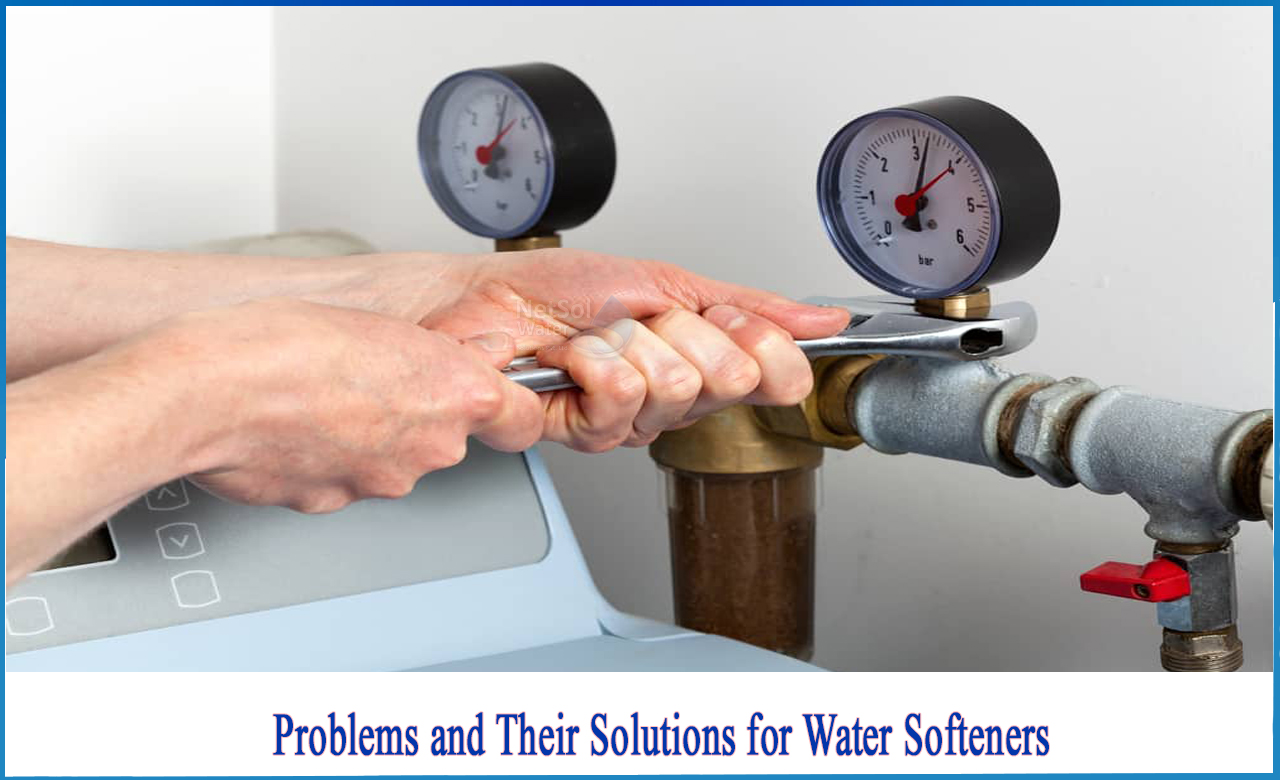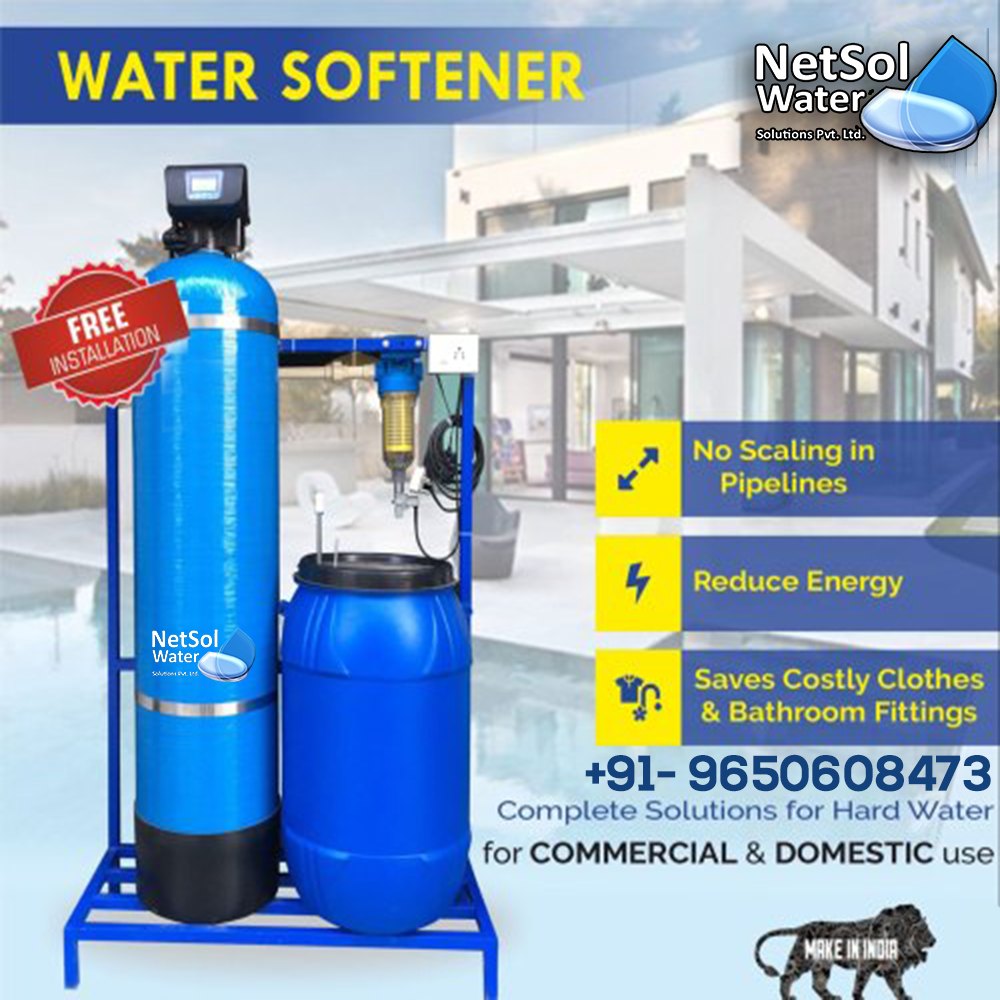How to fix a Water Softener Problems?
Water softeners appear complicated, but they are often simpler to repair than you might think. There are two major steps to take: identifying the problem and stocking up on the tools needed to fix it.
Problems with Water Softeners & their solutions:
1. Water softener with salt accumulation in water tank
The most common issue that water softener users face is a salt tank full of water. This is usually caused by a lack of overflow or clogging. However, the problem could be caused by a number of factors.Identifying the correct cause of water in the salt tank can assist you in properly troubleshooting the unit. The following are the most common causes of water accumulation in the salt tank:
- The water softener is o?ut of date: These systems have a life expectancy of about eight years before degrading rapidly. Inspect the components of - your system for wear and tear damage, such as cracks in the tank and O-ring damage, if it is old or you don't know how old it is.
- The water entry valve is broken: If this valve is broken, water may continue to flow into the salt tank, causing flooding. Simply replace the lid to resolve the problem.
- The float valve is set too high: The float valve regulates the water level in the compartment. Excess water may accumulate if it is set too high, as the softener may be unable to effectively release it. To resolve the issue, lower the float valve.
2. Water softener bridges made of salt
Water softeners are intended to keep minerals from scaling on your pipes and fixtures, but they are also susceptible to salt – which is still a mineral – scaling inside the tank and along the system's lines. This build-up can occasionally form salt bridges at the tank's base, preventing your system from softening the water.
A salt bridge is simply a hard crust of salt that prevents water from flowing through the brine tank and the system from running its regeneration cycles. A salt bridge, if left unidentified, has the potential to break the system.
However, once identified, the salt bridges are simple to repair by simply breaking and removing the salt crust. Also, make sure to clean any salt buildup around the tank's edges.
3. Water softener discolors water
We've all seen disgusting brown water come out of the faucet at some point. It's obvious that this water is unsafe to drink, but if you have a water softener, you might be wondering if it's the source of the disaster.For your information, there is a remote possibility of brown water due to the softener. Brown water is frequently caused by worn-out plumbing or high levels of dirt and sediment in the water supply.
Sterilize your system with chlorine or hydrogen peroxide to rule out this possibility. Fill the brine tank with two cups of sterilizer, run two or three regeneration cycles, and then flush the pumping system. If the problem persists, hire a plumber to inspect your system for leaks or check with your water supplier to see if any faults have been reported.
4. No salt is used in water softeners
If the salt level in the brine tank remains constant over time, this indicates that no salt is used. As a result, there is no ion exchange and thus no softening of the hard water. This results in a system that is nearly useless unless the problem is identified and corrected.
To enjoy the benefits of soft water, resolve the salt bridge issue as described above. If there is no salt bridge but the system still does not use salt, it is a good idea to contact the manufacturer of your system and ask for troubleshooting advice.
5. Inadequate brine tank water
We've already discussed the main causes of an overflowing brine – or salt – tank. But what should you do if the brine tank's water level is too low?
Although many people are perplexed as to why there is no water in their brine tank, know that this is normal and an indication that your system is functioning properly. Unless the salt level in the tank drops significantly, to around 12 of the tank's volume, there is little chance of finding water in there.
6. Problems with water softeners beads made of resin
Resin beads are used in salt-based water softeners to increase their effectiveness. These beads are typically as long-lasting as the system. However, in some cases, they can break or lose their potential, necessitating more frequent salt replenishment.
Another sign that the resin beads are not functioning properly is the presence of floating particles in the softened water.
Although this may be an annoyance, the solution is straightforward. Follow the instructions in your user manual to clean or replace the resin beads. This is usually a simple problem that you can solve on your own without spending a fortune.
7. Water softener doesn't soften water
The most vexing of all water softener issues is discovering that your system is not actually softening the water. For example, the system bypass switch could be turned off, resulting in no water flowing through the system at all. Your soft water demand may also exceed the capacity of your system. In this case, the resin beads may not regenerate completely between softening cycles.Other problems in the brine tank or with the resin beads could also prevent the system from producing soft water.
The correct identification of the cause is the first step in resolving the problem. Then, consult your user manual for specific troubleshooting. If you require more soft water than the system can produce, you can use more salt and run longer regeneration cycles to slightly increase the capacity of your system.
8. Low water pressure caused by a water softener
Most homeowners are concerned about low water pressure. In most cases, a water softener will cause low water pressure in the following situations:
- The system is insufficient: Inadequate system sizing can result in low water pressure. When sizing your water softener, consider both the inlet pressure and the output pressure it promises.
- Scaling or sediment clogging in any part of the system can cause a drop in water pressure. If you suspect a blockage, inspect the piping and the rest of the system to locate it, then remove it.
- Another common issue is iron build-up in the resin tank, which can significantly reduce water pressure. You can avoid this problem by adding a mineral cleaner to the resin tank and increasing the frequency of regeneration cycles.




